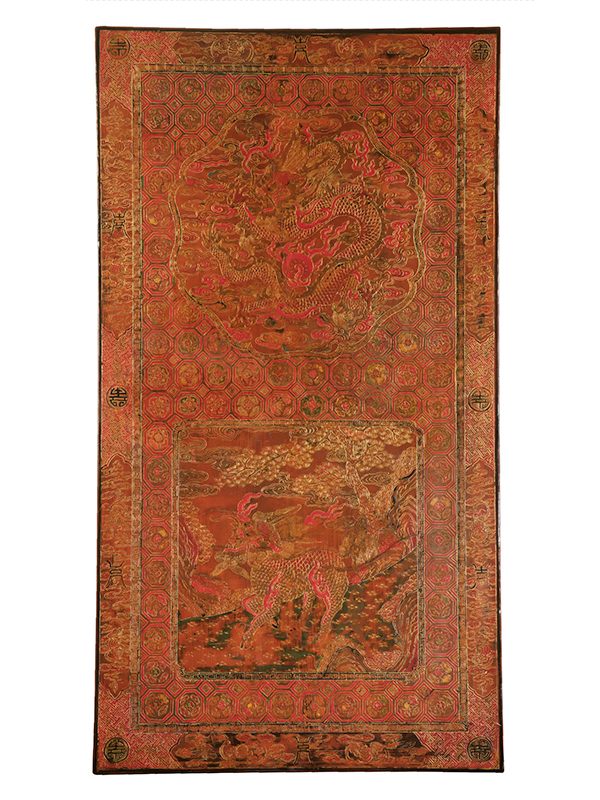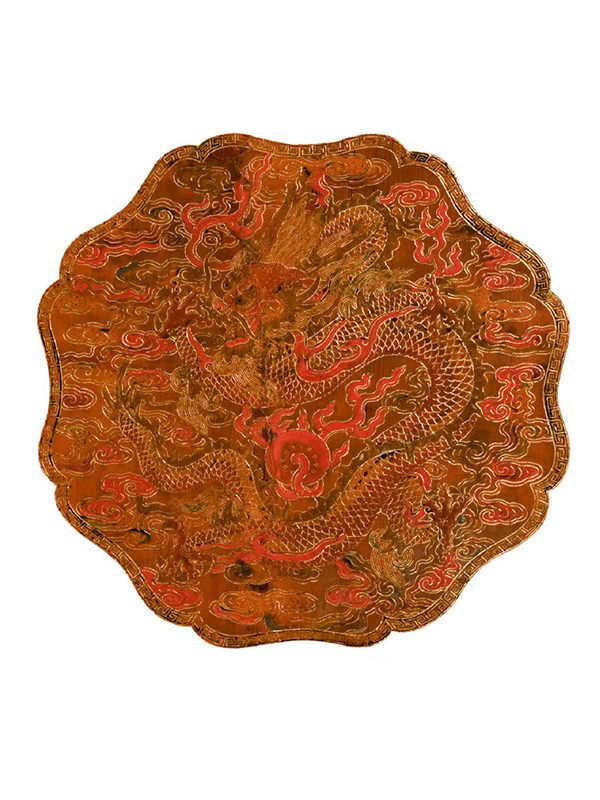Lacquer hanging panel
Late Ming dynasty, 17th century
A lacquer hanging panel of rectangular shape. The panel is decorated in two different techniques: it is painted in coloured lacquer (tianqi) and engraved in gold (qiangjin). It shows two main decorative cartouches, one of octafoil shape with a four-clawed dragon chasing a flaming pearl among cloud scrolls. The other cartouche is of square shape with rounded corners and is decorated with a qilin in a landscape setting. Both cartouches are framed in key-fret pattern and are set on a ground of large octagonal diapers, each containing cloud scrolls and separated by wan-symbols. The outer border has bats in panels, alternating with Shou symbols and key-fret pattern. A continuous band of key-fret pattern in gilt forms the outer edge of the panel.
During the late Ming dynasty the techniques of painted colour lacquer (tianqi) and engraved gold (qiangjin) were popular, and the present panel represents a superb example. The painted lacquer technique is achieved by painting on the lacquer surface using a variety of colours, whilst the engraved gold technique is executed by filling lacquer glue and gold powder into hair-like lines engraved into the lacquer surface.1 A circular lacquer dish, decorated in both the qiangjin and tianqi techniques with a dragon amongst cloud scrolls is in the Baoyizhi collection formed by Dr. Hsu, where it is dated 1595.2 A square table top in the Museum für Lackkunst in Munster, Germany, dated circa 1600, is decorated with a very similar dragon panel.3
- Kwan, S. Chinese Lacquer; The Muwen, Tang Collection Series, vol. 20, Hong Kong 2010, pp. 69, 71
- Lam, P.Y.K. Layered Beauty, The Baoyizhai Collection of Chinese Lacquer, Art Museum, Institute of Chinese Studies, The Chinese University of Hong Kong, 2010, no. 20, pp 60-61
- Kopplin, M. Ostasiatische Lackkkunst, Ausgewählte Arbeiten, Museum für Lackkunst, Münster, 1998, no 16, pp 114-5


